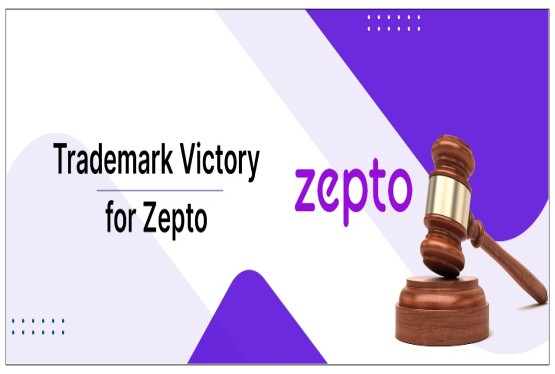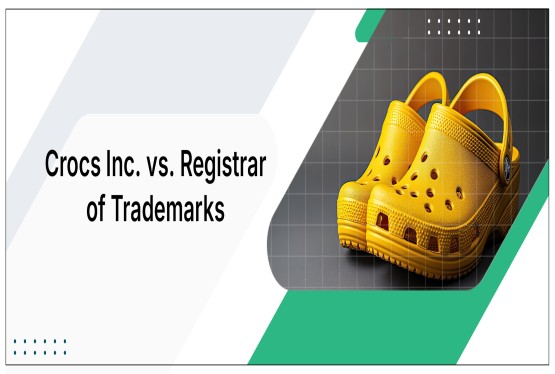Forms a major core area of the law related to intellectual property. Brands, relative restrictions make them stand unique in the marketplace because of their trademark registration under trademark laws. The cost paid for this is very great. Relative factors of determination decide whether trademarks cannot be registered or not. These relative restrictions assure trademarks do not infringe any rights if already existent nor cause consumer confusion. Based on the facts relevant to the statutes, judicial pronouncements, the article focuses on relative restrictions in trademark registration in India.
Legal Frame Work: Trademark Registration
Trademarks Act, 1999 is the principal legislation relating to trademark registration in India. It provides detailed guidelines regarding the procedure of registration which comprises absolute and relative grounds of refusal. Relative limitations are available as contemplated under Sections 11(1) to 11(3) of the Act to prevent conflict with the existing trademarks and to safeguard the interests of the owners of trademarks and the public at large.
Essential comparative limitations in trademark filing
(i) One of the major comparative limitations that exist with any trademark would be a likelihood of confusion with an existing trademark. Section 11(1) of the Trademarks Act refers to where a trademark may not be registered if identical or similar to an earlier trademark and causes confusion to the public where the goods and services are either identical or similar.
Example: In Amritdhara Pharmacy v. Satya Deo Gupta AIR 1963 SC 449 the Apex Court of India had dealt with the case of holding that trademark "Amritdhara" for drugs deceptively similar to Lakshmandhara for identical or similar commodity and refused registration.
(ii) Section 11(2) covers well-known trademarks also. Such new registration of trademark does not grant it the right if such has a tendency on its own to dilute or tarnish a mark's reputation by itself. This, thus will be protected, irrespective of goods and services being diverse in nature.
Example: Daimler Benz Aktiegesellschaft v. Hybo Hindustan (1994 PTC 287) This is a case which well explains known trademarks and their protection. The Delhi High Court refused the registration of the trademark "Benz" for undergarments. It was held that the trademark "Mercedes-Benz" is very famous worldwide.
(iii) Registered Trademarks with Reputation in India: Section 11(3) bars the right to registration of trademarks which are either identical with or similar to an earlier mark with reputation in India. Such a denial is without regard to the goods or services the new trademark would identify if the use of the new trademark without due cause would exploit or be detrimental to the distinct character or reputation of the earlier trademark.
In ITC Ltd. v. Philip Morris Products SA, 2010 (42) PTC 572 (Del), the Delhi High Court upheld the reputation of the "Classic" cigarette trademark, defeating the registration of a very similar mark for unrelated goods.
(iv) Rights of goodwill of which forms at common law and includes such passing off. Though a trademark may not be registered yet prior use and goodwill of a trademark will prohibit registering another conflicting trademark. Under common law principle, the passing off prevents misrepresentation of the goodwill associated with an unregistered trademark.
Cadila Health Care Ltd. v. Cadila Pharmaceuticals Ltd., 2001 PTC 300 (SC), is illustrative of the point in question which reitereated the law on passing off. In the given case, the Supreme Court held that the marks "Falcitab" and "Falcigo" used for pharmaceutical products may cause confusion and can damage the goodwill of the plaintiff.
How to treat relative restrictions
These processes have to be involved when the relative restrictions when a trademark application comes.
-
Examination Report: The registrar of trademarks furnishes an examination report along with objections on relative grounds.
-
Response to Examination Report: Applicant can submit his response against the objections raised, may provide evidences or arguments to override comparative restrictions imposed.
-
If the objections are not solved, then a hearing can be set where parties may plead their case before the registrar.
-
It will then decide it with consideration of the evidence and argument. If he does not get his decision in favor, he may appeal for its review to IPAB or further to the court.
Judicial pronouncements and their authority
One key feature concerning comparative limitations is the clearly defined judicial function supervising the construction and application of such restrictions as relevant to trademark registration. Indeed, judicial decisions are heavily dependent on weighing in the interest of trademark owners and members of the general public at large against those within the interests of serving trademarks primarily to identify origin and sources of goods and services.
-
M/S S. S. Products of India v. Star Steel Works (AIR 1973 SC 1943): Here again, the Supreme Court reiterated that possibility of confusion must be judged from the standpoint of average consumer having imperfect memory. Held that minor differences in trademark may not be sufficient enough to exclude the probability of confusion.
-
Tata Sons Ltd. v. Manoj Dodia (2011 (46) PTC 244 (Del): The Delhi High Court observed that protection of a well-known trademark is required. It was held of fact by the Delhi High Court that since the trademark "TATA" was well known, it was entitled to protection against any unauthorized use irrespective of the nature of the goods or services.
Conclusion
Relative restrictions in the trademark registration context are basic to ensure that marks are different and unique. Relative restrictions prevent conflicts with coexisting marks and safeguard the interests of mark owners and consumers in having a level playing field for their market places. The Trademarks Act, 1999, read with judicial interpretations, furnishes a sound structure dealing with relative restrictions and protection associated rights from trademarks. The relative restrictions need to be understood by the businesses, lawyers, and brand managers. Negotiating trademark registration's complex issues is achieved through an understanding of the statutory provisions, case laws, and procedural requirements to ensure proper protection of trademarks that can be efficiently developed in the marketplace.
Frequently Asked Questions
Q1. What are relative restrictions in trademark registration?
Ans. Relative restrictions are legal limitations that prevent the registration of a trademark if it is too similar to an existing trademark. These restrictions are designed to protect the rights of existing trademark owners and prevent consumer confusion.
Q2. What are the main grounds for refusal under relative restrictions?
Ans. The primary grounds for refusal under relative restrictions are:
-
Likelihood of Confusion: If a new trademark is likely to cause confusion with an existing trademark, it may be refused registration.
-
Dilution of Reputation: If a new trademark is likely to dilute the reputation of a well-known trademark, even if the goods or services are different, it may be refused registration.
-
Unfair Advantage: If a new trademark takes unfair advantage of the reputation or distinctive character of an existing trademark, it may be refused registration.
Q3. How can I avoid relative restrictions when registering a trademark?
Ans. To avoid relative restrictions, it's crucial to conduct a thorough trademark search to identify any existing similar trademarks. Consider consulting with a trademark attorney to assess the potential risks and develop a strong trademark strategy. You may also consider alternative wordings, designs, or color schemes to differentiate your trademark.
Q4. What happens if my trademark application is refused due to relative restrictions?
Ans. If your trademark application is refused due to relative restrictions, you can:
-
Appeal the decision: You can appeal the decision to the Intellectual Property Appellate Board (IPAB).
-
Amend the application: You can modify your trademark application by changing the wording, design, or color scheme.
-
File a new application: You can file a new application with a different trademark.
Q5. How can I protect my trademark rights after registration?
Ans. To protect your trademark rights after registration, you should:
-
Monitor the marketplace: Keep an eye on the market to identify any potential infringement of your trademark.
-
Take action against infringement: If you find any instances of infringement, take immediate legal action to protect your rights.
-
Renew your trademark: Ensure that your trademark is renewed periodically to maintain its validity.
-
Consider additional protections: You may want to consider obtaining international trademark registrations to protect your brand in foreign markets.






























_(b)_of_the_Trademark_Act,_1999_(1)_crop10_thumb.jpg)



_crop10_thumb.jpg)




























_crop10_thumb.jpg)
_crop10_thumb.jpg)






_crop10_thumb.jpg)








_crop10_thumb.jpg)



_crop10_thumb.jpg)





























_crop10_thumb.jpg)

















_crop10_thumb.jpg)






_crop10_thumb.jpg)











































































































































_crop10_thumb.jpg)




































_crop10_thumb.jpg)












_crop10_thumb.jpg)































